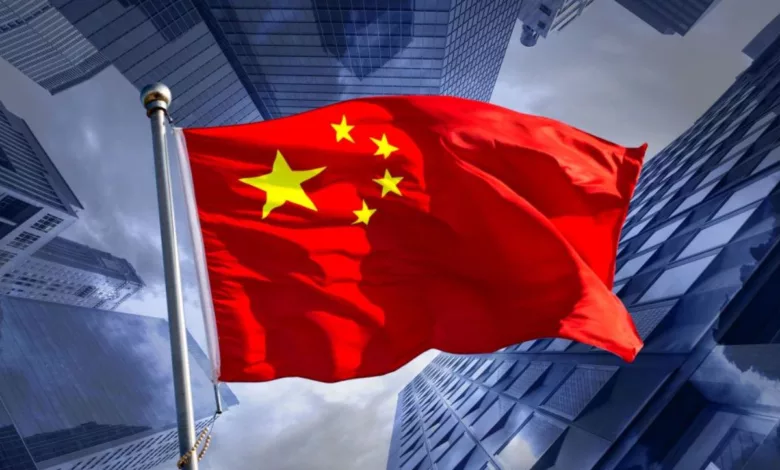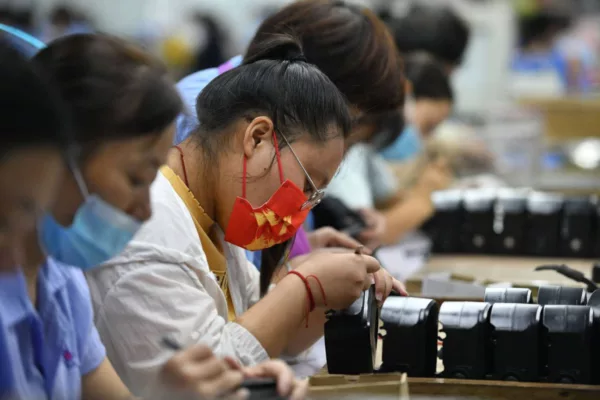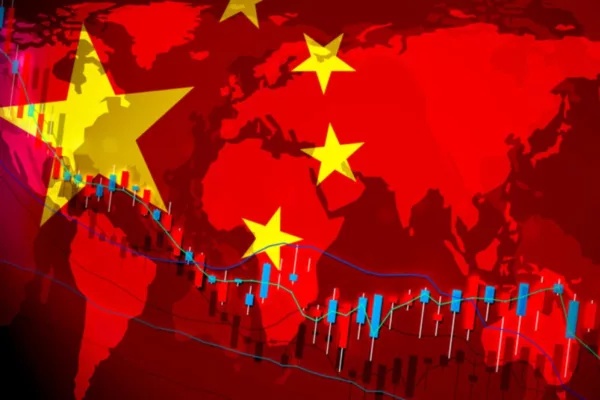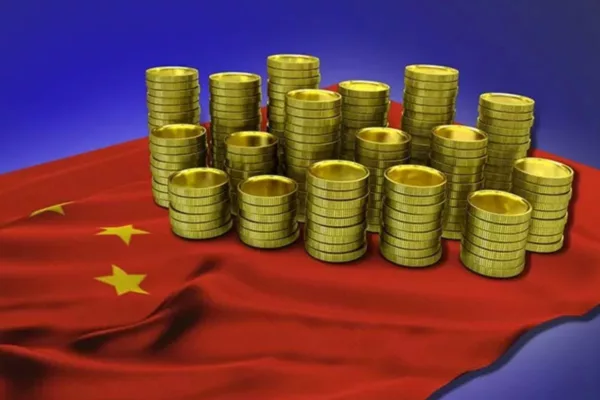Is the rapid growth era in china over: Report

Is the rapid growth era in China over?
Through massive government expenditure initiatives, China was able to weather the storm and support the global economy when much of the world experienced a severe recession in 2008–2009. A recurrence of a Chinese-led recovery is less likely now that the globe is “perilously near” to entering a worldwide recession due to Russia’s conflict in Ukraine and the COVID-19 epidemic, which has been going on for three years.
In 2022, the nation’s GDP barely grew by 3%. According to a December survey by Nikkei of 37 analysts, growth is anticipated to continue to be weak in the first quarters of 2023 before increasing significantly in the second half of the year.
The majority of the projections fell between 4.0 and 5.9 per cent, with the average GDP growth rate offered by the group being 4.7 per cent. However, even the most hopeful recovery scenario for China does not foresee a return to the explosive growth rates the nation had become accustomed to for years.
Since Beijing began implementing economic reforms in 1978, China’s GDP has expanded by an average of around 10% yearly. Since the start of the epidemic, the second-largest economy in the world has seen great turmoil.

Following initial hope for a recovery in 2020, repeated crackdowns on the private sector and rigorous zero-COVID lockdowns have shattered supply chains and eroded investor confidence. More unfavourable news arrived in January: For the first time in 60 years, the country’s population fell last year, raising doubts about the future of its labour force.
Can China ever hope to return to sustained high growth now that President Xi Jinping has virtually been installed as the country’s leader for life and has officially exited zero-COVID?
According to World Bank data, China’s economy expanded rapidly over a long period, from $1.2 trillion to approximately $18 trillion, between the turn of the century and 2021. The GDP of the United States, which has the most excellent economy in the world, has grown by slightly more than twice as much as it did in 2000.
However, forecasts predict that China’s growth rate will fall between 2 and 5 per cent during the following years. Even that hides a transition that has already begun, according to economist Michael Pettis, a senior fellow at the Carnegie Endowment for International Peace in Beijing.
GDP metrics only provide a fragmented, time-delayed picture of the Chinese economy; thus, concentrating on them runs the danger of missing the forest for the trees. According to the statistics, the period of solid growth appears to end, but in reality, it ended roughly 10 to 15 years ago in terms of productive investment.
According to Pettis, the gross domestic product (GDP), which was initially used to measure Western economies, is not designed to capture anomalies brought on by China’s “soft budget constraints,” which refer to a system where the government steps into pay for spending that exceeds the income generated by a project.

For instance, despite the Gobi Desert sewage system’s low economic worth, a sewage system created in Beijing might increase China’s GDP by the same amount.
If it’s politically required, you may keep losing money in China for a very long period, but it doesn’t mean the economy is doing well, he claimed.
Most economists seem to think China’s former growth model is no longer viable. The nation’s economy is currently through a significant shift. Thus the future is uncertain.
Population ageing and declining productivity in China
China’s unique demographic and economic circumstances, which it used to achieve remarkable growth in recent decades, are no longer present. The massive labour pools supporting China’s low-cost industrial base are becoming smaller as the population is ageing quickly. After several years of slower birth rates, the country’s population started to fall in 2022.
India will overtake China as the world’s most populous nation this year as multinational corporations shift manufacturing to other parts of Asia, including Vietnam, Malaysia, India, and Bangladesh.
The infrastructure and real estate debt-heavy investments that have historically been the engine of China’s growth have also reached their pinnacle. According to Hung Tran, a senior fellow at the Atlantic Council, these expenditures have produced declining returns.
Total factor productivity measures how much output an economy produces as a percentage of inputs, which has been declining in China. Before 2008, productivity growth was 2.8 per cent on average, but it has since dropped to barely 0.7 per cent annually.
As indicated by the collapse of the largest property developer in the nation, Evergrande, in 2021, numerous heavily leveraged businesses and local governments are now on the verge of collapse.
Undoubtedly, China’s authorities may use specific levers to lessen the discomfort of the transition. The official retirement age for men (60) and women (55), if raised to 65, would “increase the labour participation rate of the economy – a tactic effectively adopted by Japan,” according to Hung.
However, even that might only partially postpone the crisis: After reaching a peak of just under 1 billion people in 2015, the proportion of China’s population aged 15 to 64 is already declining.

According to Hung, eliminating the hukou system, which links social benefits to household registration, might boost urbanisation rates and support China’s labour force. The current system frequently denies migratory workers in metropolitan areas access to state benefits like public education, discouraging future urbanisation.
Increasing manufacturing automation by leveraging China’s cutting-edge digital infrastructure could also support maintaining industrial productivity. Nevertheless, Beijing’s political leadership is establishing new priorities for China’s journey even as it works to smooth an otherwise chaotic decline into a higher level of slower growth.
What Xi seeks to examine oneself?
In contrast to past post-reform leaders, Xi has altered Beijing’s policy emphasis away from the maxim “growth at all costs.” Instead, he has focused on “high-quality growth,” one of China’s five-year plan’s guiding principles.
It is a component of Xi’s “new development paradigm,” emphasising excellent income distribution in China and resistance to external pressure. By developing an economy driven by domestic demand, experts say the goal is to reduce China’s reliance on export-driven development.
A robust domestic market might serve as a shock absorber against the turbulent international trading system and Western sanctions. Along with pursuing cutting-edge technology like improved semiconductors and quantum computing, China’s new policy intends to lessen the country’s carbon impact.
A wave of harsh export control restrictions by the US intended to destroy China’s chip industry has made domestic development of these technologies even more crucial for the nation.
But can “high-quality growth” produce the same explosive growth rates as before? Although it hasn’t happened historically, in theory, it could happen, according to Pettis. The critical word here is consumption.
By the end of 2021, household spending as a percentage of total GDP was roughly 38%, far lower than the worldwide average of 63%, making China the major economy with the lowest level of consumption. “GDP is likely to be around 2-3 per cent at most unless you can have that increase in [home] consumption,” he said.
China’s and the world’s implications of slow growth
All people will be affected by the slowing of the Chinese economy, but not equally.
The decline in demand will be felt strongly in many nations, especially those who have come to rely heavily on China as their primary export market.
The victors and losers in this shift will largely depend on how quickly countries can switch to other emerging markets with more robust growth rates, such as Southeast Asia and India.
The balance of power in geopolitics will also be affected by the recession. If China reaches its economic peak during the next ten years, it will be less likely that it will overtake the US as the world’s most powerful country.
Experts have cautioned that such a scenario would push Beijing to move more rashly on issues it sees as essential to its “core interests” at the height of its power, such as Taiwan’s status.
Economic experts also forecast unrest in China.
To direct Beijing’s attention toward resolving inequities, from housing to healthcare and education, Xi has taken the watchword of the Mao era, “common prosperity,” as a guiding economic philosophy. Shared prosperity has evolved into the talking point for intrusive market intervention, yet specifics on how it will be implemented are lacking.
For instance, soon after a crackdown that reduced the market value of their companies by more than a trillion dollars, China’s tech CEOs gave billions to the cause. At the investment firm Natixis, chief economist for Asia Pacific Alicia Garca-Herrero asserts that “shared prosperity is not actually about redistribution in the sense it is defined in the Western welfare models.”
Since it ranges from 15% to 25%, China’s company tax rate isn’t increasing. She said that the Chinese Communist Party (CCP) would instead concentrate on accumulating excessive riches for redistribution, but “whom and how will be selected ad hoc.”
But this shift in Beijing’s priorities towards “sharing the pie” is already a recognition of China’s new reality. Maintaining robust economic growth has been essential to the CCP’s rule’s legitimacy for many years. However, the supposedly communist leadership may need new narratives to preserve credibility in the eyes of the Chinese people in this new lower-growth age.
To address the rising wealth disparity and inequality, which could cause societal unrest, Hung emphasised that it was essential to promote shared prosperity.
If China makes the correct decisions, it might see “slower, but hopefully more egalitarian and sustained growth,” the author stated. as well as a new social agreement between the party and the 1.4 billion citizens of the nation.
edited and proofread by nikita sharma



